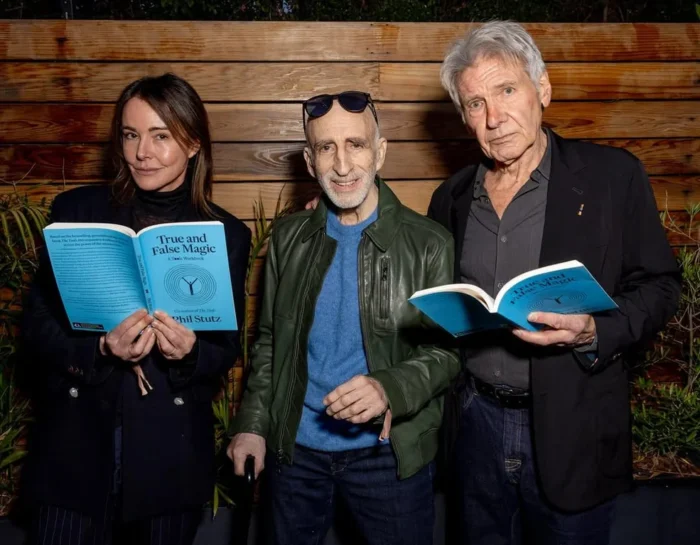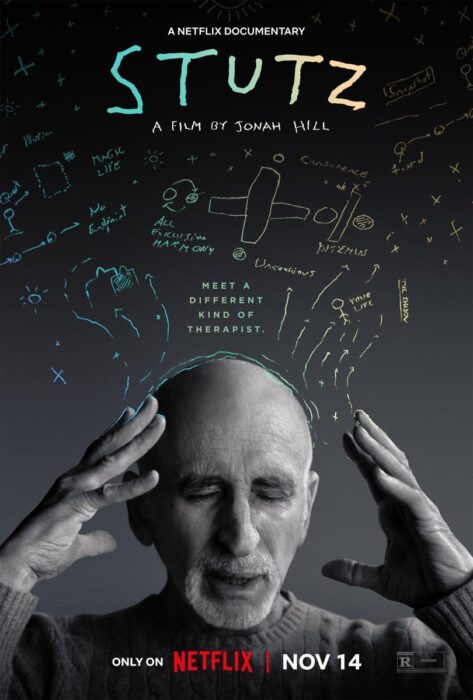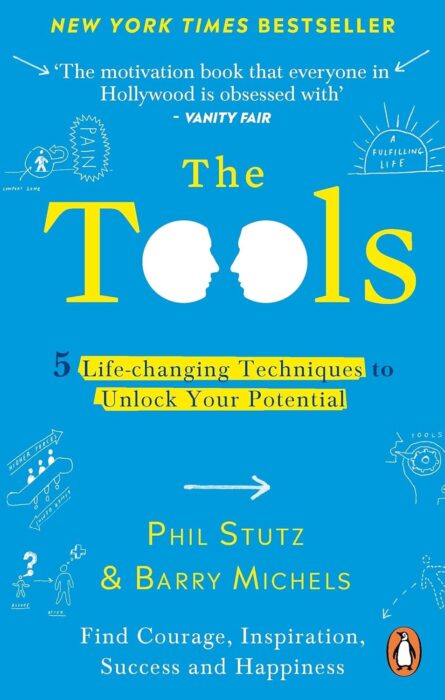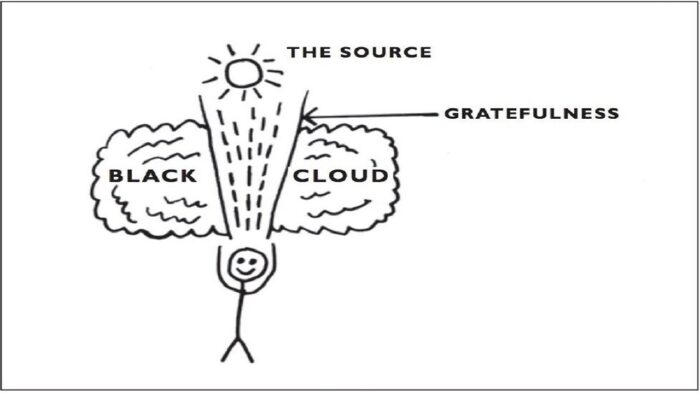The Tools by Phil Stutz and Barry Michels
A few weeks ago, I finished watching the TV show Shrinking, starring Harrison Ford and Jason Segal, created by Bill Lawrence of Scrubs and Ted Lasso fame. It’s a wonderful show about three therapists navigating the world at different times in their lives. The show does a great job at being funny while navigating deep subjects such as grief and forgiveness. Like most shows created by Bill Lawrence, the strength is in the likeable characters who make an immediate impact on you. You can’t wait to catch up with them each and every episode.
After finishing up the first two seasons, I decided to look up a few things online. I’ve learned from past experiences that it’s best to wait until you finish a show to look it up, not just for spoiler reasons, but because people are dicks. If you want something you are really enjoying to be ruined, look it up on reddit while you are watching/doing it. Most likely, you’ll find people happy to oblige in telling you why what you like sucks.

Anyway, I ran across this picture, which is of Harrison Ford and Christa Miller (another star in the show, as well as Bill Lawrence’s wife). The man in the middle is Christa’s therapist, Phil Stutz whom both Harrison Ford and Jason Segal’s characters are loosely based on. I was curious about the book, because I found some of the therapy techniques in the show to be outside the box, in a good way.
I have a bit of a conundrum. I’m a big proponent of therapy. I’ve seen it work magic in people’s lives around me, and I love that. Anything to make it easier to navigate this world I’m a big fan of. Sadly, therapy has never really worked out well for me. I go in with high hopes, but am ultimately let down by the generic CBT advice. You know the stuff, journal, meditate, mindfulness, don’t be such a downer, etc.
I think these things are wonderful for individuals with no self-care experience or who need a bit of a redirect, but for me, a guy who has actively spent the past twenty-five years participating in various self-care, studying Buddhism, Taoism, Stoicism, meditating, and journaling… its just more of the same advice for me. In many cases, these things treat the symptoms, not the root of the issue. So, ultimately, I grow tired of spending money and time on something that is no more helpful than a book I can pick up.
I’ve also been unable to find a good fit with medication. Over the years, I’ve tried a variety of different anti-depressants, which have not helped at all. It’s frustrating because I’m open and willing to do whatever I can to feel better, but I just haven’t found the right tools to do so, and this brings me back to Phil Stutz, the man in the photo.
After doing a little digging, I discovered that Mr. Stutz is a therapist in the Los Angeles area, who has garnered the respect and admiration of some famous Hollywood bigwigs. One actor in particular, Jonah Hill, was so appreciative of the progress he made with Phil, that he made a documentary called Stutz on Netflix a few years ago. Sadly, having watched this documentary, I can say that Jonah Hill is a terrible documentary filmmaker and the movie is a terrible introduction into what I’m about to talk about.

I decided to read the book Phil Stutz wrote alongside his colleague Barry Michels titled The Tools. Upon first glance, the book was not all that impressive. It featured one of those cheesy taglines Five Life-Changing Techniques to Unlock Your Potential which is usually enough to turn me off from reading a book like this. However, I decided to disregard the crummy marketing techniques from Penguin Random House and see what the first chapter had to offer. The reviews were certainly good enough that I could give it at least a chapter or two.

What I found inside was unexpected. In many ways, it was exactly what I’ve been looking for: tools for my toolbox.
I could never do the book service, so if you are interested in this, I highly recommend you skip the ChatGPT summary and pick up the book. I also recommend just reading a chapter a day, which is how I read it which allowed for plenty of time to absorb the concepts.
The Tools are techniques to help you deal with negative thoughts. Unlike conventional therapy that relies on you journaling or meditating in hopes to releasing the negativity or preventing it, the tools are something you can do while you are in the midst of dealing with something, and they are a bit more advance than just counting to ten or taking a deep breath.
I guess, I’d describe them as visualization techniques that allow your brain to break away from that chaos that is ongoing. They are designed to be used daily, multiple times per day in some cases, and to help create a better headspace. And having tried these out for the past couple of weeks, I must admit, they have worked better than I ever could have imagined. I found these tools so useful, I went searching for a better note-taking system, just so I could outline the steps and take tidbits from the book, and have them on me at all times (more on that in the future).
One of the techniques I use the most is called The Grateful Flow.

The idea behind this tool is that at times, we find ourselves beneath a dark cloud. This cloud brings us down and makes everything seem horrible. In order to combat this, we use gratitude to break through the cloud and into the light. Here are the steps outlined in the book:
Pick out things in your life you can be grateful for – particularly things you’d normally take for granted. Say them to yourself silently, slowly enough to feel the value of each one. “I’m grateful for my eyesight; I’m grateful I have hot water,” etc. You should do things until you’ve mentioned at least five items – it takes less than thirty seconds. Feel the slight strain of your effort to find these items.
You should feel the gratefulness you express flowing upward, directly from your heart. Then, when you’re finished mentioning the specific items, your heart should continue to generate gratefulness, this time without words. The energy you are now giving out is the Grateful Flow.
As this energy emanates from your heart, your chest will soften and open. In this state you’ll feel yourself approaching an overwhelming presence, filled with the power of infinite giving. You’ve made a connection to the source.
Now, I’ve experimented with gratitude journals and found them to be overrated. If anything, they felt like a waste of time, which is exactly what I thought of when I first read this tool. How is this going to work? Eventually, I’m going to run out of things, and I’ll just be making up stupid stuff to say I’m grateful for, I thought to myself. But whenever I find myself ruminating, feeling overwhelmed, or just being negative, I stop and I list five things. I slow down, I breathe, and I think just taking a moment and feeling like I’m doing something to combat the thoughts and feelings, really makes me feel better. So much so, I find myself using this tool several times a day, daily, which I never imagined I would when I first read this chapter.
My explanation and my pasting of the steps does not do the explanation nor the frequently asked questions in the book any justice, so if this is something that interests you, I’d highly recommend reading the book. And no… there are no good YouTube videos either, I already looked.
I think what resonates with me about The Tools is that they are proactive. I actually have something to do. I don’t have to wait it out, or wait until I get home to journal or meditate. Instead, I use the tool and reframe my mind right away.
As the book progresses through the five Tools, the last chapter or two touch a bit on spirituality. Had I known that going in, once more, I probably would have been hesitant to read the book. However, this spirituality is not the typical spirituality we are used to seeing. There is no particular system of faith the book promotes. Sure, you can insert your own faith into this, but it’s a very “spirituality comes from within” approach and as much as I cringed when I first began reading the chapter, by the end of it, I was 85% on-board. In a strange way, it actually fits very much into one of my biggest concerns in life, that in my secular life I am missing something and this book’s approach has been by far the easiest to swallow. The brief explanation is that in the past we took spiritual direction from others. We needed a person of faith to tell us what to think or to interpret the belief system, while the book proposes that the future will require us to seek spirituality from within and allow that to be shaped by our own thoughts and influences. Again, it’s different and there is no way I can properly summarize this in a blog post.
It’s only been a couple of weeks since I began using The Tools, but unlike the promises of the other 100+ self-help books I’ve read, this one has actually made a difference. The jury is still out on whether this will be a long-term practice (although that is addressed in the book) or if this is something I’ll move on from, but for the first time in quite some time, I have some hope for feeling better. Some of my thoughts and expectations have been re-framed and if anything, I’m just excited to read more of Phil Stutz and Barry Michels’ books.
I don’t think there is one solution for fixing negative thinking. I feel like your mileage my vary with any technique you use. For some folks, meditation is their path to contentment. For others, it’s journaling. For some it’s talk therapy, and maybe for some others, it’s The Tools.